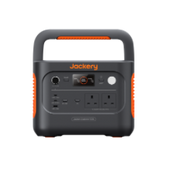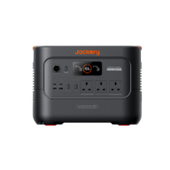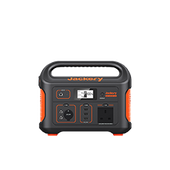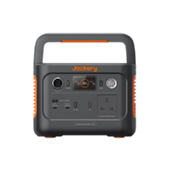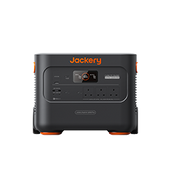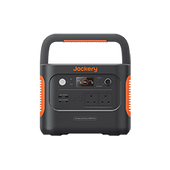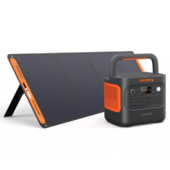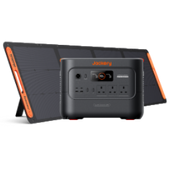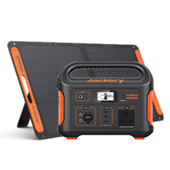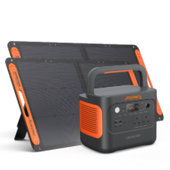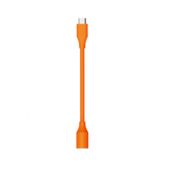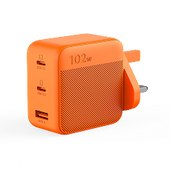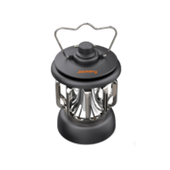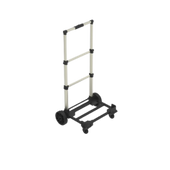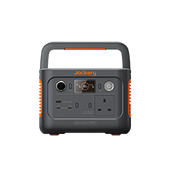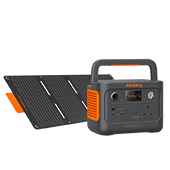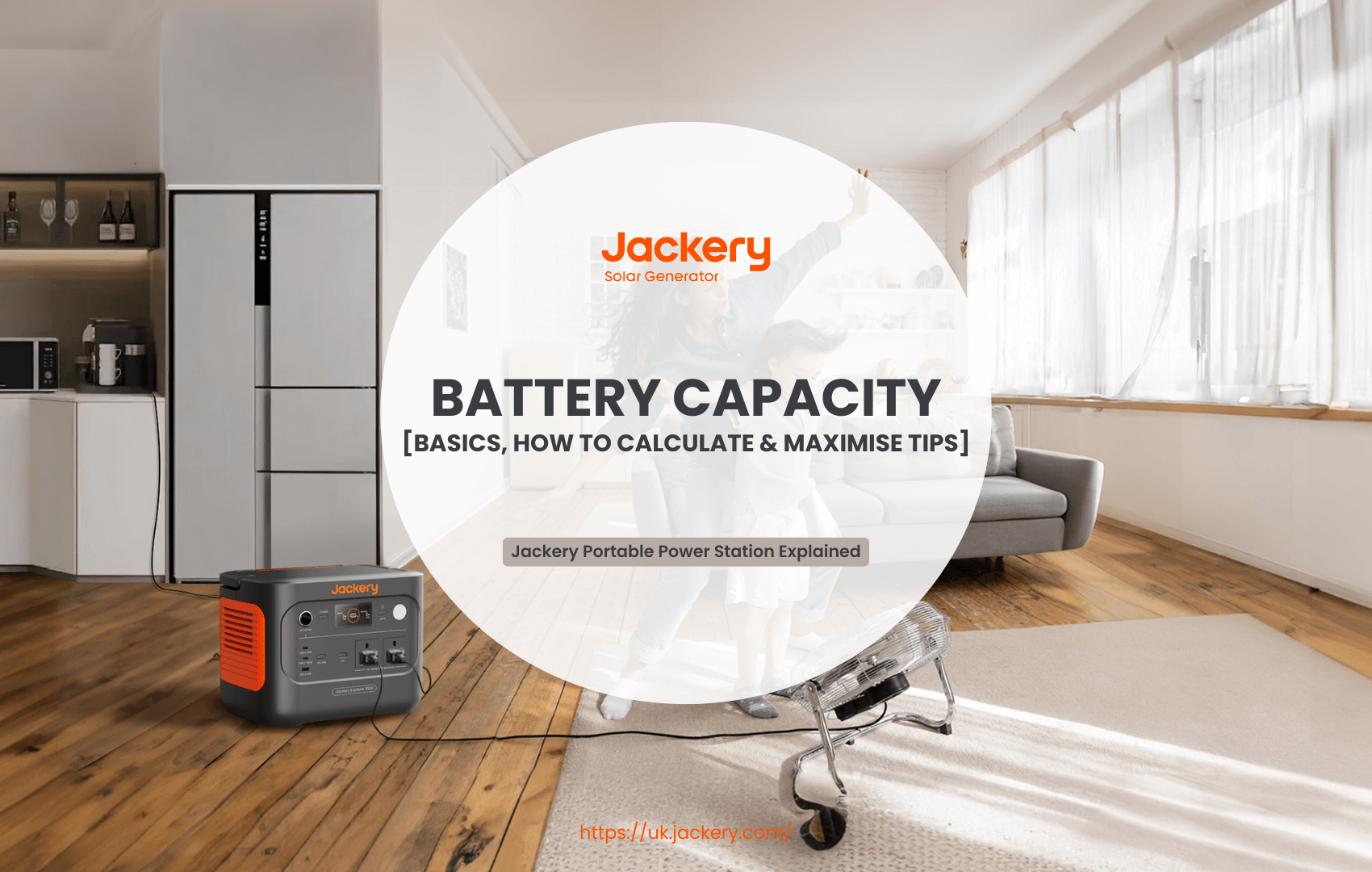In today's fast-paced environment, people have become accustomed to relying on electronic devices to perform various functions, from smartphones and tablets to laptops and portable power supplies. Battery capacity is an essential indicator of how long the battery can power the device.
The following content explains battery capacity, how to calculate it, the factors that affect it, the causes of decay, how to determine the appropriate battery capacity and tips for maximising it. We also recommend Jackery Portable Power Stations, which utilise high-quality LiFePO4 and lithium-ion batteries with higher capacity.
|
Key Takeaways: |
|
- Battery capacity indicates the amount of electricity released by a battery under specific conditions such as termination voltage, temperature, and discharge rate. - You must know the discharge current and time to calculate the battery capacity (Ah). - The battery capacity of low-power, compact devices such as mobile phones is often marked in mAh, while that of most power tools is often marked in Ah. - Each discharge and charge cycle will slightly reduce the battery capacity. For example, lithium batteries may lose 10-20% capacity every 500 cycles. - Battery components will age over time, gradually declining battery performance and causing battery capacity to decay. - Please keep the battery capacity between 20%-80% for a long time. - We recommend Jackery Explorer 2000 v2 and 1000 v2 to power your indoor and outdoor appliances with higher capacities. |
What Is Battery Capacity?
Understanding battery capacity is important because it is one of the most critical performance indicators for measuring battery performance. It represents the amount of electricity the battery releases under specific conditions, such as end voltage, temperature, discharge rate, etc.
Every battery has a limited capacity, determining how long it can power a device (such, a mobile phone, laptop, etc.). Generally, the higher the battery's rated capacity, the longer it can last between charges. The following will explain the units of different battery capacities:
Milliampere-hour (mAh): A milliampere-hour is a smaller unit of measurement for battery capacity. One milliampere-hour (mAh) equals one-thousandth of an ampere-hour (Ah).
Amp-hour (Ah): Ampere-hour (Ah) is the central unit for battery capacity. For example, a battery with a capacity of 500 Ah can power a device that consumes 50 amperes per hour for 10 hours. Ampere-hour (Ah) suits larger-capacity batteries, such as electric vehicles, solar energy storage batteries, etc.
Watt-hour (Wh): Watt-hour (Wh) can directly represent the energy stored in the battery. For example, the battery capacity of Jackery Explorer 2000 v2 Portable Power Station is 2042Wh, which can power a 1600W electric oven for about 1.1 hours.
Kilowatt-hour (kWh): Kilowatt-hour (kWh) is usually a standard battery capacity unit for electric vehicles or home energy storage systems. For example, an electric vehicle battery capacity of 100 kWh can provide 100 kilowatts of power for 1 hour.
How to Calculate Battery Capacity?
Battery capacity is a key indicator of a battery's energy storage capacity. The following article will analyse how to calculate battery capacity (Ah or mAh) by combining formulas, calculation steps, and practical applications.
For most electronic devices, battery capacity measures how long a battery can discharge continuously at a specific current, measured in ampere-hours (Ah) or milliampere-hours (mAh). Ampere-hours (Ah) and milliampere-hours (mAh) are often used to evaluate the battery's endurance under constant current, such as in flashlights, drones, and other devices.
You can calculate the battery capacity (Ah or mAh) according to the following formula:
Ah-hour capacity (C) = discharge current (I) × discharge time (t)
Example 1: What is the capacity of a battery that is discharged at 1A for 10 hours and then exhausted?
1A×10h=10Ah
If a battery is discharged at 1A for 10 hours and then exhausted, its capacity is 10Ah.
Conversion between Ampere-hours (Ah) and Milliampere-hours (mAh)
If you want to convert the capacity of a battery (in milliampere-hours (mAh)) to ampere-hours (Ah), you can divide it by 1000. In simple terms, 1000mAh equals 1Ah (1000mAh / 1000 = 1Ah).
Example 2: If a battery is discharged at 200mA for 5 hours and then exhausted, what is its capacity in ampere-hours (Ah)?
200mA×5h=1000mAh
1000mAh / 1000=1Ah
Based on the above, if the battery is discharged at 200mA for 5 hours and then exhausted, its capacity is 1Ah.
How Do You Determine How Much Battery Capacity You Need?
First, evaluate your energy needs based on your specific usage (home energy, mobile devices, and electric vehicles) to calculate the required battery capacity. Here are the particular steps and methods to determine the capacity of the battery needed:

Step 1: Identify Power Needs
Confirm the power of all devices that need to be powered, such as 10W for a light bulb, 60W for a laptop, etc. The power can be calculated using the following formula if the device is marked with current (A) and voltage (V).
Power = Voltage × Current
Example 1: Assuming an electronic device is marked with current (5A) and voltage (2V), the power is 10W (5A*2V=10W)
Then, you need to estimate the hours the device needs to work per day or each time. After knowing the device's power and operating time, the total energy consumption can be calculated using the following formula.
Total Energy Consumption = Device Power × Usage Time
Example 2: Assuming a 50W device works for 5 hours daily, the total energy consumption is 250Wh (50W × 5h = 250Wh).
Step 2: Consider Battery Parameters
The battery voltage must match the device voltage (12V, 24V, etc.). A voltage converter is required if the device voltage differs from the battery voltage. You can calculate the battery capacity (Ah) according to the following formula:
Required capacity = total energy consumption/battery voltage
Example 3: If the total energy consumption is 250Wh and the battery is 12V, the capacity is about 20.8Ah (250Wh / 12V ≈ 20.8Ah).
Step 3: Consider Safety Margin and Efficiency Loss
After calculating the estimated battery capacity, you also need to consider the battery's maximum power, which means how much of the battery capacity can be safely used. For example, using only 50%—80 % of the capacity (DoD is 50%—80 %) for lead-acid batteries and 80%—100 % (DoD is 0%-100 %) for lithium batteries is recommended.
Battery adjusted capacity = required capacity / DoD
Example 4: If the battery DoD is 80%, the adjusted capacity is about 26Ah (20.8Ah / 0.8 ≈ 26Ah).
In addition, during the battery's actual operation, the inverter, line, etc., will experience a loss of 10% to 20%.
Final battery capacity = adjusted capacity/efficiency
Example 5: If the efficiency loss is 90%, the final battery capacity is 29Ah (26Ah / 0.9 ≈ 29Ah).
Applications of Different Battery Capacities
The following are different application scenarios analysed based on other units of battery capacity (mAh, Ah, Wh, kWh).
Application of mAh
The battery capacity unit of low-power, compact devices such as mobile phones, tablets, and smart wearable devices is often marked with mAh, which can directly reflect the battery's discharge time. For example, a mobile phone with a battery capacity of 5000mAh supports 8 hours of continuous video playback.
|
Battery Type |
Battery Capacity |
|
Bluetooth headsets |
50–200mAh |
|
Smart watches |
200–500mAh |
|
Digital cameras |
1000–3000mAh |
|
Mobile phones |
3000–5000mAh |
|
Power banks |
5000–20000mAh |
The above data is for reference only.
Application of Ah
The battery capacity of most power tools is often marked in Ah, focusing on continuous current supply capability. For example, the battery capacity of an electric bicycle is marked as 20Ah and 48V.
|
Battery Type |
Battery Capacity |
|
Cordless drills |
2–5Ah |
|
Motorcycle batteries |
4–10Ah |
|
Car starter batteries |
30–100Ah |
|
Small off-grid solar systems |
50–200Ah |
The above data is for reference only.
Application of Wh
Most energy storage systems, such as portable power stations, will mark the battery capacity in Wh. It can directly reflect the total power that the battery can release, regardless of voltage. For example, the battery capacity of Jackery Explorer 2000 v1 Portable Power Station is 1070 Wh, which can run a 500W ice maker for 1.8 hours.
|
Battery Type |
Battery Capacity |
|
Portable monitor |
20–50Wh |
|
Laptop |
40–100Wh |
|
Drone |
50–150Wh |
|
1070 Wh |
|
|
2042 Wh |
The above data is for reference only.
Application of kWh
Nowadays, kWh is often used to mark the battery capacity of electric vehicles and energy storage systems. For example, the battery capacity of the Tesla Model S is 100 kWh, which directly determines the range.
|
Battery Type |
Battery Capacity |
|
Solar energy storage system |
5–20 kWh |
|
Electric vehicle |
40–100 kWh |
|
Data center backup power |
>100kWh |
The above data is for reference only.

Jackery Portable Power Stations Explained
The capacity of a portable power station, typically measured in Watt-hours (Wh) or Amp-hours (Ah) at a specific voltage, is arguably its most crucial characteristic. It dictates its overall utility and the range of applications it can effectively serve.
The battery capacity directly dictates how long a connected device or appliance can be powered before the power station needs to be recharged. A higher capacity translates to longer runtimes for the same power draw, making it suitable for extended power outages, longer camping trips, or powering multiple devices for a significant duration.
For example, the Jackery Portable Power Stations, ranging from 99Wh to 12kWh, have low-to-high battery capacities to satisfy multiple power needs. Here, we emphasise the importance of Jackery Explorer 2000 v2 and 1000 v2.
Jackery Explorer 2000 v2
The Jackery Explorer 2000 v2 Portable Power Station has an astounding 2042Wh capacity and 2200W output, enough to power most camping equipment, such as a camping heater. It also has two AC outlets, one USB-A 18W port, and two USB-C ports (100W + 30W), so you can charge several devices simultaneously indoors and outdoors.
The world's first 2kWh LiFePO4 power station, which features advanced EV-grade CTB (Cell to Body) Structure technology⁵, is engineered to be more compact and lightweight. It weighs a mere 38.6 lbs—approximately the same as a suitcase. It is the ideal power solution for off-grid living, camping, and road trips and features a foldable handle for effortless transport.
There are many ways to recharge it, including 2*SolarSaga 200W (5.5 hours), regular wall charging (1.7 hours), and car charging (24 hours). With Emergency Super Charge Mode, which can be activated through the Smart App, the power station can be charged from 0% to 80% in just 52 minutes with Emergency Super Charge Mode, which can be activated through the Smart App. This feature is ideal for situations where power is required urgently. A complete charge requires only 103 minutes in regular AC charging mode.

What Can an Explorer 2000 v2 Power?
Due to the higher capacity (2042Wh), the Explorer v2 is suitable for many usages:
Outdoor Activities: The Explorer 2000 v2 provides dependable electricity for RV camping excursions, enabling the efficient operation of key appliances such as portable refrigerators, microwaves, and coffee makers. Eliminate the need for regular recharging and power constraints, facilitating a more enjoyable and seamless experience.
Home Backup: The Explorer 2000 v2 provides reliable backup power during unforeseen outages, ensuring that essential appliances such as refrigerators, lighting, and communication equipment remain operational. Eliminate concerns over food spoilage, power outages, or connectivity issues—remain prepared and at ease.
Office: The Explorer 2000 v2 guarantees continuous productivity during power interruptions by maintaining the operation of critical office equipment such as computers, Wi-Fi routers, and monitors. Whether you are telecommuting or require a dependable contingency, maintain connectivity and productivity without interruptions.
|
Appliances |
Running Time |
|
For Outdoor Activities |
|
|
Coffee Maker (1120W) |
1.8H |
|
E-Bike (652Wh Battery) |
2.3 Times |
|
Portable Refrigerator (90W) |
15H |
|
For Home Backup |
|
|
Heater (1800W) |
1H |
|
Electric Oven (1600W) |
1.1H |
|
Light (5W) |
155H |
|
For Office |
|
|
Laptop (80W) |
19 Times |
|
Phone (29W) |
80 Times |
|
Projector (100W) |
15H |
(*The working hours are only for reference; the actual working hours depend on your usage.)
Jackery Explorer 1000 v2
We also recommend Jackery Explorer 1000 v2 with 1070Wh capacity. Its capacity and design make it suitable as a portable power supply for small to medium appliances.
The Explorer 1000 v2 Portable Power Station has an excellent 1500W output and 1070Wh capacity, 50% higher than the Explorer 1000. It can power high-demand items like portable space heaters, kettles, etc. Equipped with USB-A/C connections and dual PD charging up to 100W, it can simultaneously charge several devices (phone, laptop), rendering it the ideal companion for all your power requirements.
The app's Emergency Charge Mode allows the Explorer 1000 v2 Portable Power Station to be fully charged in less than an hour, offering vital power backup when the battery runs low. Moreover, charging from 0% to 100% within two hours via an AC wall outlet prolongs battery longevity.
Experience serenity with its nearly silent operation, maintaining noise levels below 22dB while energising your devices. This power station guarantees uninterrupted enjoyment during camping, work, or relaxation so that you can power your electric blankets and other electronics without noise.

What Can an Explorer 1000 v2 Power?
Compared to Explorer 2000 v2, the Explorer 1000 v2 portable power station has a relatively low capacity but can still power many appliances indoors and outdoors.
Outdoor Camping: Enhance your camping experience with the Jackery 1000 v2. Effortlessly energise your camping necessities, including lighting, coolers, and portable stoves, while ensuring your devices remain charged to document every memorable experience. This allows you to relish the outdoors without compromising on contemporary convenience.
Emergency Home Backup: With the Jackery 1000 v2 at your disposal, you can be equipped for any emergency. During power outages, you can keep vital gadgets such as your phone, radio, or medical equipment operational. The Jackery 1000 v2, featuring substantial capacity and diverse output possibilities, offers reassurance, enabling you to manage unforeseen circumstances effortlessly.
|
Appliances |
Running Time |
|
For Outdoor Camping |
|
|
Portable Refrigerator (60W) |
15H |
|
Drone (90W) |
25 Times |
|
Projector (100W) |
8H |
|
For Home Backup |
|
|
Microwave (1160W) |
0.8H |
|
Electric Kettle (600W) |
6 Times |
|
Coffee Maker (550W) |
1.5H |
(*The working hours are only for reference; the actual working hours depend on your usage.)
What Factors Affect The Battery Capacity?
Typically, batteries for different uses have different rated capacities. Battery capacity is a key indicator of its energy storage capabilities and is affected by various internal structures, usage conditions, and environmental factors.

Ambient Temperature
Most batteries operate best within a moderate temperature range (20°C to 25°C). Extreme temperatures shorten the battery's life expectancy and reduce its battery capacity. Battery capacity decreases under extreme conditions such as snow or high temperatures. For example, the capacity of a lithium battery may be halved at -20°C.
Number of Cycles
Each discharge and charge cycle will slightly reduce the battery capacity. Typically, the performance of a battery with a rated capacity of 100% will drop to 90% or 80% after a certain number of cycles, which is usually quantified as cycle life. For example, lithium batteries may lose 10-20% capacity every 500 cycles.
Electrolyte Density
Batteries with higher electrolyte density values can increase capacity and enhance power output during operation. Batteries with lower electrolyte density will reduce capacity and power output during operation. However, batteries with higher electrolyte density values will increase electrode wear and thus shorten the battery life compared to batteries with lower electrolyte density.
Plate Number and Size
In a battery cell, the number or size of plates indicates the total amount of active material that can store energy. The more plates there are and the larger the surface area, the larger the reaction area in contact with the electrolyte and the higher the battery capacity.
Charge and Discharge Rate
Each battery has a limited number of charge times. If you continue to use fast charging, the battery capacity will decrease by about 10-20% after some time. According to Pickett's law, the available energy decreases as the discharge rate increases. Suppose you continue to use the battery and discharge it with a large current. In that case, it will accelerate sulfuric acid consumption, decreasing the utilisation of active materials and causing battery capacity decay.
Why Would Battery Loss Capacity?
Battery capacity is related to battery life. Generally, the longer the battery is used, the lower the battery capacity will be. Assuming a battery's capacity is 5000mAh, it will not reach the rated capacity after one year. It may only be 80% of the rated capacity (4000mAh)—the reduction in battery capacity results from the combined action of multiple factors.
Chemical Side Reactions Consume Active Substances
When the battery is charged and discharged, the electrolyte undergoes side reactions such as oxidation or reduction with the electrode to form a solid electrolyte interface (SEI film). The continuous thickening of the SEI film consumes lithium ions and electrolytes, decreasing capacity. Lithium deposition occurs when lithium-ion batteries are overcharged or charged at low temperatures, reducing the active lithium inventory and decreasing capacity.
Structural Degradation of Electrode Materials
Over time, the battery's cells, electrodes, plates, and other components will age, decreasing its performance. For example, the electrode material (active substance) peels off from the current collector (such as copper foil or aluminium foil), reducing the effective reaction area. The battery capacity will decay as performance decreases.
Damage from Charging and Discharging Habits
If the battery is frequently over-discharged to 0%, the negative copper current collector may dissolve and damage the battery structure. In addition, the current is too large during fast charging and discharging, and long-term battery capacity reduction will also occur. Long-term storage at full charge will also aggravate the oxidation of positive electrode materials and electrolyte decomposition, reducing battery capacity.
Other Factors
Generally, process problems such as impurities and uneven electrode coating may accelerate battery capacity decline. However, the battery will decay in capacity even if not used due to spontaneous chemical reactions such as slow electrolyte decomposition.
In short, battery capacity reduction is an irreversible loss and a normal ageing phenomenon. Current technology cannot altogether avoid it, but reasonable use can significantly extend the life span.
Tips for Maximising the Battery Capacity and Lifespan
Battery capacity is the heart of electronic devices and directly affects the user experience. Scientific usage habits and maintenance methods can extend battery health and reduce capacity decay.

Tip 1: Avoid Deep Charging and Discharging
Frequently draining the battery to 0% or keeping it 100% fully charged for a long time will accelerate the battery's ageing and capacity decline. It is recommended to charge when the power drops to about 30% and stop charging when it reaches 80%- 90%.
Tip 2: Maintain the Best Charging Habits
Segmented charging can reduce the battery's calendar ageing effect. For example, lithium-ion batteries have no memory effect, and frequent shallow charging (such as 30%→80%) is more friendly than deep cycling.
Although modern devices have charging protection, it is still necessary to avoid charging overnight. In addition, please use standard charging mode instead of fast charging as much as possible. Long-term use of rapid charging may affect life.
Tip 3: Control the Battery Charging Temperature
When the ambient temperature exceeds 35°C, the battery chemical reaction intensifies, which can easily lead to permanent capacity decay. Avoid charging or using the device at high temperatures (such as direct sunlight or exposure in a car). If the battery heats up severely during charging, it is recommended that the use be suspended.
Tip 4: Use Original or Certified Chargers
When charging the battery, prioritise original or safety-certified charging devices. Poor-quality chargers may cause voltage instability, reduce battery capacity, or even damage the battery.
Tip 5: Long-term Storage Method
When you want to store the battery for a long time, store it in a cool and dry place at about 15°C. Then, control the battery charge to about 50-60%, avoiding full or empty states. If you don't use it for a long time, recharge the battery every 1-2 months.
Battery Capacity FAQs
The following are the frequently asked questions about the battery capacity.
1. What does a 70 Ah battery mean?
70Ah refers to the battery's capacity. Theoretically, this battery can be discharged at a current of 1 ampere for 70 hours until it is completely discharged. If this battery is discharged at a current of 7 amperes, it can last about 10 hours.
2. What is a good battery capacity?
The selection of battery capacity should be based on the specific purpose, equipment requirements and portability.
If you choose a mobile phone, a battery capacity of 4000mAh—5000mah is sufficient. If you choose a laptop, a battery capacity of 40wh60wh can be considered. Most people will choose an electric bicycle with a battery capacity 48V and 20Ah to 30Ah. If camping or travelling a short distance, an outdoor power supply of 500Wh to 1000Wh is sufficient.
3. How do you measure battery capacity?
The constant current discharge method can be used to measure the capacity of a rechargeable battery.
After fully charging the battery with an appropriate charger, set the electronic load to discharge at a constant current (i.e., 1/5 of the battery's nominal capacity). Use a multimeter to record the voltage at discharge (e.g., a lithium battery starts at 4.2V). Stop when the voltage drops to the cut-off voltage (e.g., a lithium battery 2.75V-3.0V).
Capacity (Ah) = Discharge current (A) × Discharge time (hours)
Example: Discharge at 500mA for 3 hours to the cut-off voltage, then the battery capacity is 1.5Ah (0.5A × 3h = 1.5Ah).
4. Is a battery capacity of 80% bad?
Keeping the battery at 80% is better for battery health and may extend its life. However, if the battery is maintained at over 80% for a long time, it may degrade due to the high voltage state.
Final Thoughts
Ensuring your device has enough battery capacity is among people's biggest challenges. It is something that comes up with almost every battery-powered electronic product and device. Whether it is a portable device or an extensive energy storage system, users must check the battery capacity to understand how long it will last. Knowing the battery capacity is essential to making an informed decision about purchasing and using batteries.



